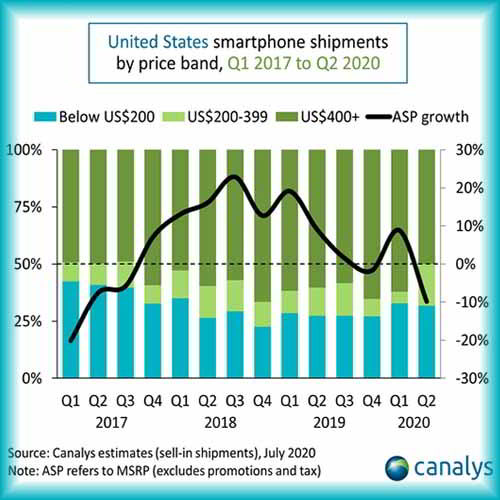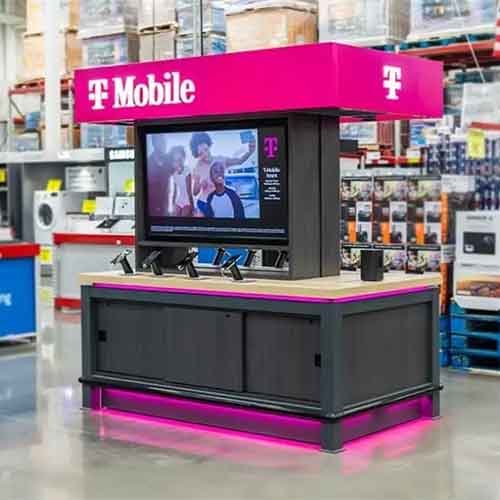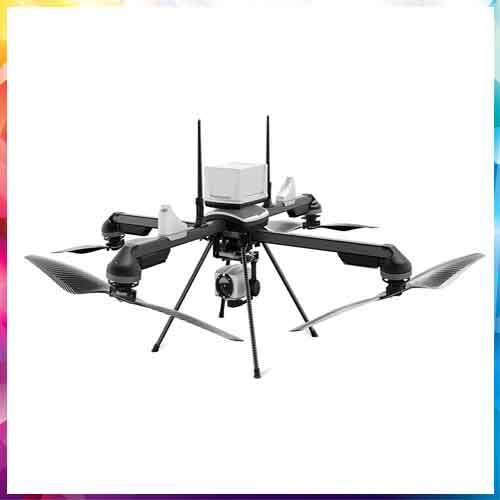
Vendors shipped 31.9 million smartphones in the United States in Q2 2020, a 5% year-on-year decline, but an 11% quarter-on-quarter increase. Resumption of Chinese factory operations at the end of March and stores reopening in May and June were key contributors to sequential market growth. Apple and Samsung accounted for seven out of every 10 devices sold, and Apple established a new domestic record in Q2, shipping 15.0 million iPhones. It shipped 15% more of its flagship iPhone 11 than last year’s best-seller, the iPhone XR. With the launch of the iPhone SE, Apple’s quarterly market share ballooned to 47%. Samsung matched 2019 shipment levels, but its fortunes reversed. It shipped 59% fewer Galaxy S20 5G series handsets than S10 series models in Q2 2019. Rampant point-of-sale closures immediately followed Q1 channel fill, and Samsung found itself leaning heavily on its low-end Galaxy A10e and A20 devices to prop up shipments. The average price of a smartphone in the US hit US$503, 10% lower than in Q2 2019.
Canalys Analyst Vincent Thielke said, “As the coronavirus pandemic forced consumers to stay at home, 5G adoption in the US failed to take off. Store closures and virus fears limited interaction with demonstration models, tight consumer budgets further constrained spending power, and with scarce 5G network coverage in American suburbia, consumers saw plenty of reasons to buy a 4G device instead. Despite the lackluster 5G roll-out so far, strong carrier marketing in coming quarters will be instrumental in catalyzing a multi-year transition period from LTE to 5G.”
The federally-subsidized Lifeline program provides discounted phones for low-income Americans. As millions find themselves out of work, distributors are increasing orders for ultra-low-end Android smartphones from lesser-known brands, such as Unimax and Wiko, for qualifying citizens. “Greater unemployment has cut consumer choice, in some cases restricting the ability to buy a new device or cover phone-related expenses. With economic challenges likely to persist, the sub-US$400 segment is poised to gain more prominence, particularly as Google and other Android players increase their exposure to the low-end and mid-range segments.”
Around 70% of smartphones shipped in the US in Q2 2020 were made in China, up from 60% the quarter before. “Tensions between the US and China have escalated in recent years, creating a perpetual state of uncertainty for all smartphone vendors except Samsung and LG. The worsening relationship has resulted in extreme instability that has global onlookers eagerly awaiting November’s presidential election. This may guide the US-China trade war into a new phase of détente – or reignite flare-ups.”
See What’s Next in Tech With the Fast Forward Newsletter
Tweets From @varindiamag
Nothing to see here - yet
When they Tweet, their Tweets will show up here.




























